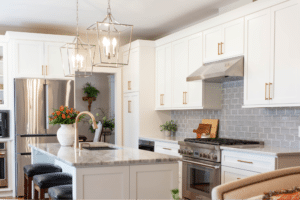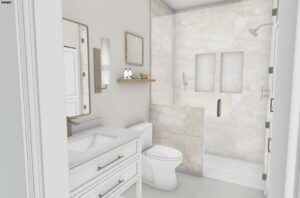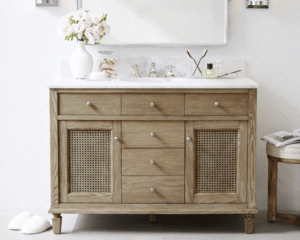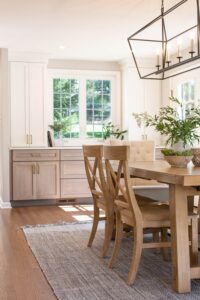When it comes to designing a room, texture is often overlooked. However, adding texture to a room can bring depth, warmth, and visual interest to any space. In this comprehensive guide, we’ll explore the importance of texture in room design and provide you with practical tips and ideas for incorporating texture into your own space.
Why Texture Matters in Room Design
Texture is an essential element of interior design that can greatly impact the overall aesthetics of a room. It refers to the surface quality of an object or material, and it can be visual or tactile. Texture adds dimension and character to a room, making it feel more inviting and cozy.
Visual Interest and Depth

One of the main reasons why texture is important in room design is that it adds visual interest and depth. A room with only smooth surfaces can feel flat and uninviting. By incorporating different textures, you can create a more dynamic and visually appealing space.
For example, a room with a mix of smooth and rough textures, such as a plush rug on a hardwood floor, a velvet sofa, and a woven wall hanging, creates a more interesting and layered look.
Warmth and Comfort
Texture can also add warmth and comfort to a room. Soft, plush textures like faux fur, velvet, and chenille can make a space feel cozy and inviting. On the other hand, rougher textures like exposed brick or natural wood can add a rustic and warm feel to a room.
Practical Tips for Adding Texture to a Room
Now that we understand the importance of texture in room design, let’s explore some practical tips for incorporating texture into your own space.
Start with a Neutral Base

When adding texture to a room, it’s best to start with a neutral base. This means choosing a neutral color palette for your walls, floors, and larger furniture pieces. This will provide a blank canvas for you to add texture without overwhelming the space.
Neutral colors also tend to be more timeless and versatile, making it easier to switch up your decor in the future without having to completely overhaul the room.
Mix Textures
To create a visually interesting and well-balanced room, it’s important to mix textures. This means incorporating a variety of textures, such as smooth, rough, soft, and hard, into your space. For example, you could pair a honed/smooth granite with a rough natural stone backsplash in a kitchen.
Mixing textures not only adds visual interest but also creates a more inviting and comfortable space.

Don’t Forget About the Ceiling
When it comes to adding texture to a room, many people focus solely on the walls and floors. However, the ceiling is another great opportunity to incorporate texture into a space. You could opt for a textured wallpaper or add wood paneling or beams for a more rustic look.
Mix Textures in Small Doses
While it’s important to mix textures in a room, it’s also important not to go overboard. Too many textures can make a space feel cluttered and overwhelming. Instead, mix textures in small doses, such as adding a textured area rug or wood grain cabinetry for visual interest.
Consider the Function of the Room
When choosing textures for a room, it’s important to consider the function of the space. For example, a bedroom should have soft and cozy textures, while a kitchen or bathroom may benefit from more durable and easy-to-clean textures.
Texture Ideas for Different Rooms
Now that we’ve covered some general tips for adding texture to a room, let’s explore some specific texture ideas for different rooms in your home.
Living Room

The living room is often the heart of the home, and it’s a great place to incorporate texture. Some ideas for adding texture to a living room include:
- Layering a variety of throw pillows on the sofa.
- Adding a plush rug on top of a hardwood floor.
- Incorporating a mix of different materials, such as wood, metal, and glass, in your furniture and decor.
- Textured wall hanging or tapestry.
- Using a mix of different lighting sources, such as a table lamp, floor lamp, and string lights, to create a cozy atmosphere.
Bedroom
In the bedroom, texture can help create a peaceful and relaxing atmosphere. Some ideas for adding texture to a bedroom include:
- Layering different bedding materials, such as a cotton duvet cover, a velvet throw blanket, and a faux fur accent pillow.
- Adding a plush rug or sheepskin throw at the foot of the bed.
- Incorporating a mix of different textures in your curtains, such as a sheer fabric paired with a heavier, textured material.
- Hanging a textured wall hanging or macrame piece above the bed.
Kitchen

The kitchen may not seem like an obvious place to add texture, but it can greatly enhance the overall aesthetics of the space. Some ideas for adding texture to a kitchen include:
- Incorporating a mix of different materials in your cabinets and countertops, such as wood, stone, and metal.
- Adding a textured backsplash, such as a natural stone or a tile that has a small pattern like a mosaic.
- Incorporating a runner at the sink, plants or decorative flowers.
- Hanging a textured light fixture, such as a rattan pendant or a metal chandelier.
Bathroom

In the bathroom, texture can add warmth and character to an otherwise sterile space. Some ideas for adding texture to a bathroom include:
- Incorporating a mix of different materials in your shower, such as stone, tile, and glass.
- Adding a plush bath mat or a woven rug.
- Using a mix of different textures in your towels, such as a soft cotton bath towel and a textured hand towel.
- Hanging a textured shower curtain or a woven basket for storage.
Conclusion
Texture is an essential element of room design that can greatly impact the overall aesthetics and atmosphere of a space. By following these tips and incorporating some of our texture ideas, you can create a more visually interesting, inviting, and cozy room. So don’t be afraid to experiment with different textures and ask your One Twenty One designer how they would recommend embracing texture into your space. Most of all, have fun creating a space that reflects your personal style and taste while keeping texture in mind.








